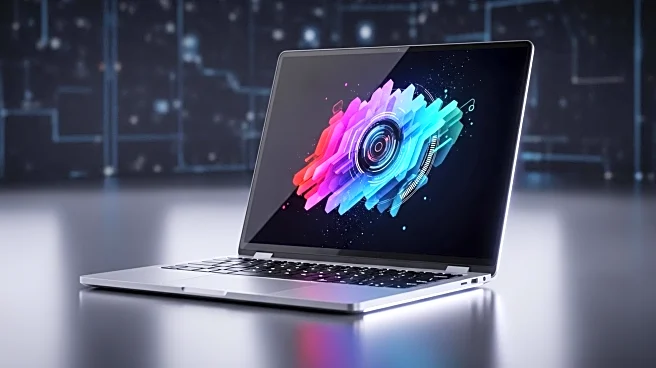What is the story about?
What's Happening?
Intel has announced its new Panther Lake chipsets, aiming to improve laptop battery life and graphics performance. The Panther Lake chips are designed to dethrone AMD in graphics capabilities by separating the GPU onto its own die, connected via a 'die-to-die interconnect.' This approach promises better graphics performance while maintaining battery efficiency. The chips will be available in three versions, featuring Intel's 18A 3nm process and new architectures for performance and efficiency cores. The top-end Panther Lake chips will support up to 96GB of LPDDR5 RAM and advanced connectivity options like Bluetooth 6 and Wi-Fi 7.
Why It's Important?
The introduction of Panther Lake chips marks a significant step for Intel in the competitive semiconductor market, particularly against AMD and Qualcomm. By enhancing graphics capabilities and maintaining battery efficiency, Intel aims to attract consumers looking for high-performance laptops without compromising on battery life. This development could influence the laptop market, pushing manufacturers to adopt Intel's new chips for better performance in gaming and professional applications. The move also highlights Intel's strategic partnerships and technological advancements, potentially impacting its market share and competitive positioning.
What's Next?
Intel plans to start shipping Panther Lake chips later this year, with more details expected at CES 2026. As major laptop manufacturers begin to integrate these chips, consumers can anticipate new laptop models featuring improved performance and graphics capabilities. The competition with AMD and Qualcomm will likely intensify, as these companies continue to innovate in the semiconductor space. Intel's focus on AI processing and graphics performance may lead to further advancements in laptop technology, influencing consumer choices and industry standards.
Beyond the Headlines
Intel's strategy to separate the GPU onto its own die could set a precedent for future chip designs, potentially leading to more efficient and powerful computing solutions. This approach may also drive innovation in AI processing, as companies explore new ways to enhance performance without increasing power consumption. The implications for gaming and professional applications are significant, as users demand higher performance and efficiency from their devices.
AI Generated Content
Do you find this article useful?

















